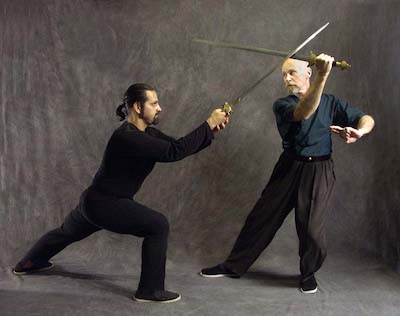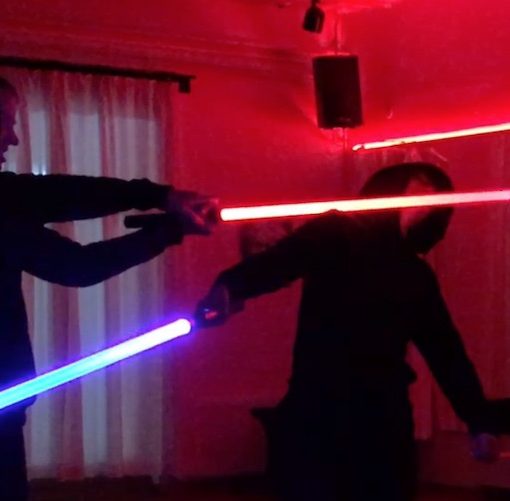Do we need ‘pushing, striking, punching and swordplay’ in a system that offers great health benefits, stress reduction and meditation in movement, whilst other physical or holistic systems such as calisthenics, swimming, yoga or Sufi-whirling have no martial component?

Tai Chi began as a martial art and evolved into a system that uses the martial aspect as its functional base, its regulatory model. This does not mean that one needs to study it as a martial art, but that the principles, axioms, and martial logics are used as a model for the therapeutic process. If we are doing a movement correctly for the martial application, our alignment and energy will also be correct for the therapeutic application.
When we are at the level of push hands and fencing, we are participating in a game / puzzle, with an opponent / partner, a game having principles, rules, goals and obstacles. These challenges are of a nature that will eventually aid in our personal evolution, physically, psychologically and socially.
During the Renaissance in Europe and in much of Asia, there was an idea of mastering many disciplines – at least five. One who did so was referred to as a ‘Renaissance Man’ and, in China, was called a ‘Master of Five Excellences’. In both cultures these accomplishments included the Fine Arts such as Poetry and Painting, as well as Horsemanship, Archery and Fencing. It was known that the learning and practice of these ‘Arts’ refined one’s character and deepened one’s understanding of life.

The “Sine Qua Non” of Tai Chi is relaxation. The outward appearance of people doing Tai Chi, except for the slow motion, is not so different from many other fighting arts. Yet to exercise the Tai Chi principles and execute the techniques, defensive or offensive, depends on being relaxed. To this end all stress and tension must be abandoned early in the study. We learn to stay calm and relaxed in situations that usually cause tension and anxiety. We practise with others who are engaged in the same practice in a safe and supervised environment.
Push hands is a game wherein two players take turns. One attempts to upset the other’s equilibrium, to uproot or unbalance them by pushing or pulling. At the same time the partner tries to handle the attacks by getting out of their way as he returns the energy of the attack to the attacker. The point of fencing is to cut or thrust (touch) the partner with one’s blade (wooden). The point of the defender is to evade or neutralize these ‘attacks’ calmly and within the principles of Tai Chi.
We stay relaxed and use the other person’s force as well as the natural forces of gravity, levity, inertia, and momentum, centrifugal and centripetal. We also use our internal energy systems, circulatory (hydraulic), respiratory (pneumatic), and nervous (electromagnetic).
While using these subtle forces we don’t need to use gross muscle contraction. This is one of the reasons why Tai Chi practitioners are able to keep their health and youthful energy into their later years.
Author and Images: Ken van Sickle
German version on our sister site!
Tai Chi Sword 8
Every Friday we will publish a new chapter of Ken’s sword book.
- Push Hands Teacher Training 2025

- Push Hands Meeting 2025

- Workshop – Tai Chi Form and Application

- NEW: Qigong with Tina – Set 1: Fit for Purpose

- Taiji Forum Qigong Weeks

- Taiji Forum Teemill Shop – Announcement

- Review on the International Push Hands Meeting 2024

- TuiShou is not fighting. So what is it then?

- Basic peng-lü drill push hands workshop

- The spiritual force of Yi in Push Hands

- Pushhands Patterns

- Music For Taijiquan Practice & Demonstration

















